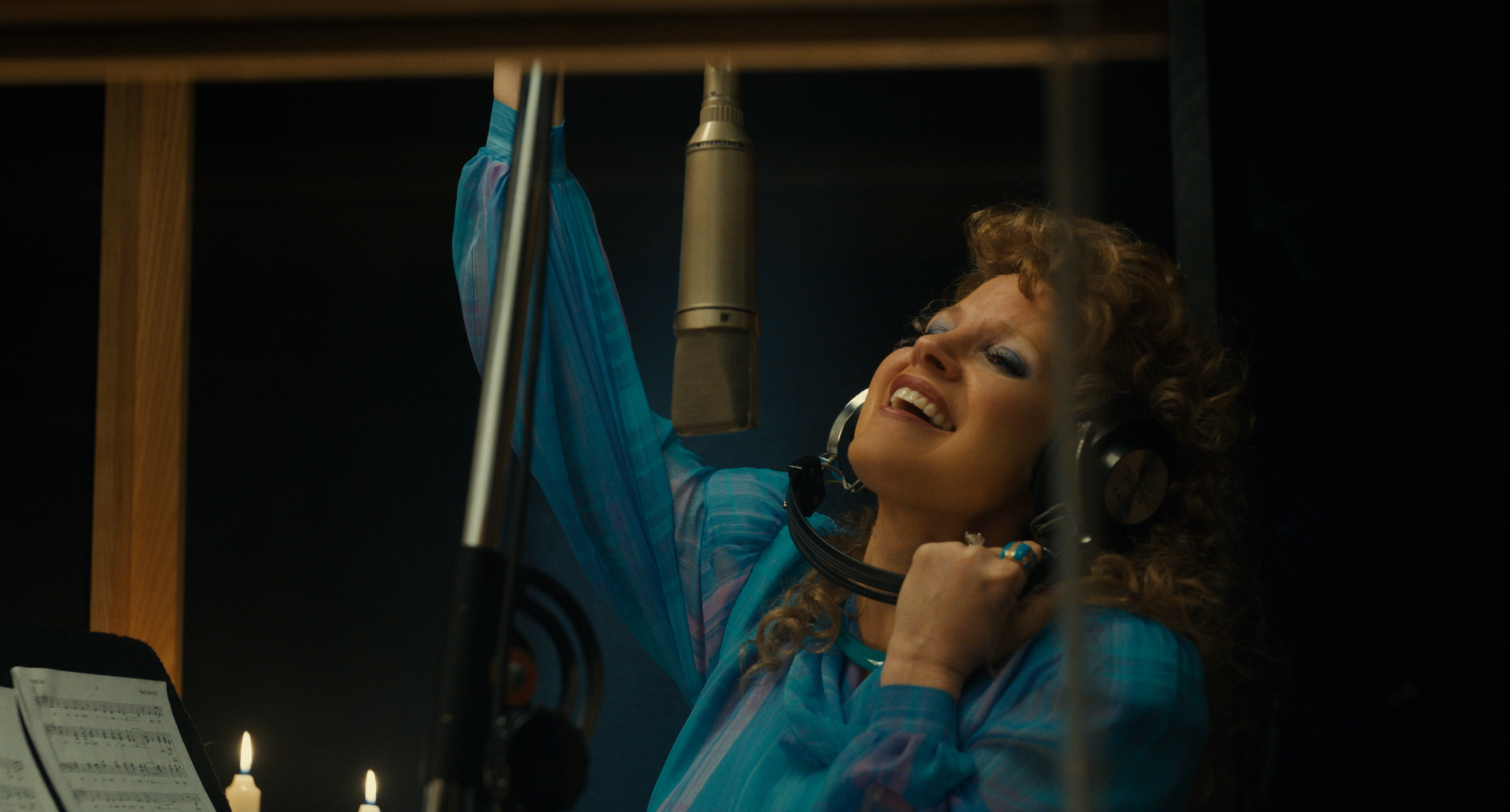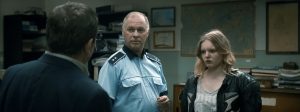Content warning: sexual assault
There is a lot to unpack about the life of much-lampooned televangelist Tammy Faye Messner (formerly Bakker). There’s the Christian worship broadcasting empire both built and destroyed by Tammy and her ex-husband Jim Bakker, her unexpected third act as an advocate for the LGBTQ+ community, and the harmful effects of the white, conservative, and evangelical culture in which the Bakkers came to power, just to name a few. There is too much, it turns out, to fit comfortably within the just-over-two-hour run time of The Eyes of Tammy Faye (2021).
Starring Jessica Chastain, The Eyes seeks to reexamine Tammy Faye both as a cultural figure and as an individual by following her from childhood to her death in the early 2000s. The film shows, step by step, the process that built her into the kind of person she was. After meeting her future husband (and later ex-husband) Jim Bakker (Andrew Garfield) at college, the two marry and start their ministry. They grow in popularity while becoming connected to the upper echelons of evangelical culture.
Throughout their relationship, Jim becomes an authority in Tammy’s life rather than an equal partner. The fissures emerge early—Jim hides things from her, taking extreme actions without her input. With these decisions filtered through Jim, Tammy is able to avoid confronting the core problems—their manipulation and exploitation of their audience, the magical thinking of their worldview, their alignment with the right-wing religious leaders—with her ascension. It seems, at points, Tammy is hiding behind this shield of passivity; the film, at its worst, uses these dynamics to mitigate Tammy’s responsibility.
Director Michael Showalter (known for writing the film Wet Hot American Summer (2001)) starts the film at a breakneck pace, choosing not to linger on the details. This is how we are introduced to the miraculous, rapid ascent of the Bakkers; we are asked not to look too closely, not to consider how they grew their audience and businesses, and to accept their prosperity gospel. All the while, Tammy’s dissatisfaction and anxiety grows. Problems, such as Jim’s financial misconduct and Tammy’s worsening addiction to prescription painkillers, arise alongside their advancements. Their successes, we are told, come at a steep cost. Watching the Bakkers build their empire is like watching a train barrel towards an immovable obstacle—gaining speed as it progresses closer to an inevitable impact.
The Eyes is at its most compelling when focused on Tammy herself. In a reversal of the dynamic that Tammy and Jim shared in their ministry, she is the center of attention. While Jim acts as the patriarchal head of the couple’s pursuits, Tammy commands the audience. Try as he might, Jim cannot match the sheer magnetism of Tammy; he is the star of the relationship only in theory. When they embrace, the camera focuses on Tammy’s face, while Jim is out of focus and mostly out of the shot. This is how the film tells us about the function of their marriage. It’s as if—despite her role in protecting and bolstering Jim’s ego and self-importance—the camera simply cannot take its focus off Tammy.
Chastain brings a kind of nervous energy, a people-pleasing positivity attributed to the evangelist’s traumatic childhood and emotionally abusive marriage. Through Chastain’s performance, we see a side of Tammy that is hesistantingly exuberant, energetic yet exhausted, sincere but self-conscious. Her extreme emotionality comes off as a desperation for approval that would appear fake if not for the moments when her mask slips and her pain shines through. Tammy’s love for God and her love for her audience are intimately tied, and the line between faith and performance are increasingly blurred.
Still, Tammy lacks Jim’s cold Machiavellianism. In one scene, she invites a gay preacher ill with AIDs, Steve Pieters, to speak on her talk show. Through her trademark cartoonish emotionality, she asks her viewership to empathize with the kind of person her community sought to dehumanize. (Pieters, thankfully, is still alive to this day). She uses her platform to make an impact—her strongest relationship, in fact, seems to be with those who watch her. When she is not on stage, we watch Tammy watching others, a directorial choice which highlights the loneliness of her position. To her community, she is an extension of her husband, but her husband blatantly lies to her face and mocks her behind her back. Behind the exaggerated affectations, the film suggests, is a deeply hurting and very complicated person.
Jim, on the other hand, is focused on grifting his way to the top, a pattern which he has, apparently, continued to this day— he used his platform to sell a phony COVID-19 cure-all. While both parties benefit from the ministry they built, Jim seizes the opportunities handed to him by the emerging “moral majority.” He eagerly rides the coattails of Jerry Falwell, Sr., a notorious bigot and the founder of Liberty University, which recently contended with a scandal of its own. The film also alludes to, but does not dwell on, allegations of sexual assault against Jim. While these allegations are mentioned, the choice to focus on the Bakkers’s financial crimes above allegations of assault is highly questionable. Media coverage of the accusation has been re-evaluated and criticised in recent years, especially because the press initially portrayed the incident against Bakker as a tryst, not the violent sexual assault of which he was accused. These accusations are particularly relevant in light of the recent #ChurchToo movement, which seeks to expose sexual abuse within church communities.
The Eyes of Tammy Faye does not always ask the right questions, and does not leave the audience with easy answers to the questions that it does pose. It does not let Tammy off the hook for her misdeeds and her complicity, but it does not engage in the cruelty of those who mocked her while she was alive. Within this story, she is both the victim and the author of her circumstances. Her legacy remains a contradiction: she was complicit in the rise of right-wing evangelicalism and guilty of perpetuating a grift in the building of her wealth, while also a victim of her culture’s cruelty and and repentant of its bigotry. This film, simply put, could not possibly have the time to decide what lies within Tammy Faye, even if an answer is readily available. Instead, it lets the audience observe Tammy as she observes her world. Perhaps this allows us to see, clear-eyed, what tends to be lost in the cultural caricatures of Tammy: her perspective.





